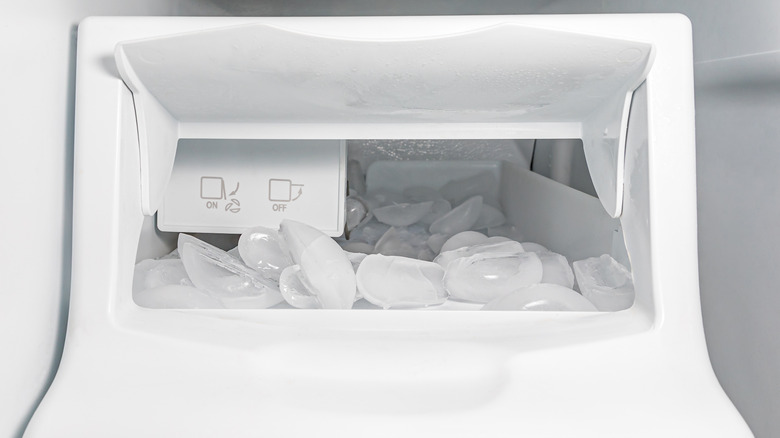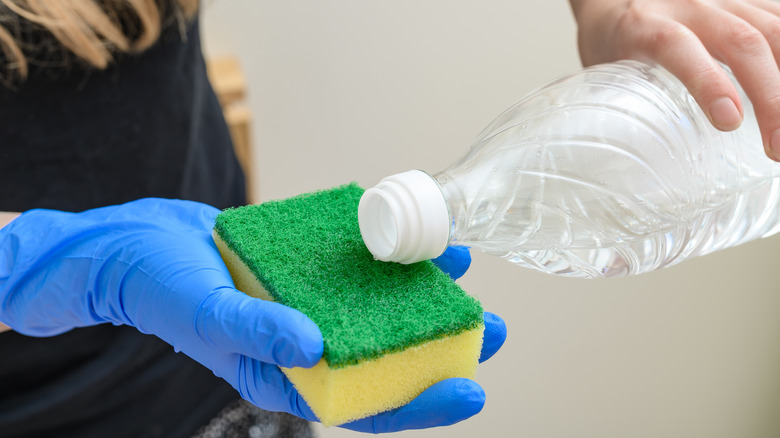How To Get Rid Of Funky Odors In Your Ice Maker (& Prevent Them In The Future)
We may receive a commission on purchases made from links.
Your ice can get stinky if you don't clean your ice maker regularly. Like any other appliance, your ice maker requires consistent maintenance, regardless of whether it's a standalone unit for your countertop or built into your refrigerator. Cleaning it will help remove any bacteria or buildup and keep any mold from forming in the machine. To clean it thoroughly, you'll need distilled white vinegar, dish soap, water, and a brush or sponge. You may also need baking soda to tackle any stubborn odors.
Multiple reasons can contribute to your weird-smelling ice cubes. For many built-in refrigerators, it might be because your fridge carries air from the fresh food and freezer areas with a single evaporator. If you have funky odors in your fridge from leftovers or stinky garlic, then those same smells can carry over to the ice maker. The evaporator is the refrigerator component that helps absorb heat, helping convert it into cool air for your fridge's contents. Some refrigerator models feature a dual-evaporator, a setup where the fridge and freezer don't share the same cool air. It may also be a dirty water filter, a problem that can also occur in countertop ice makers. Other reasons for these odors in countertop ice makers include a dirty water filter, hard water, or a dirty bucket. You probably don't give a second thought to cleaning your ice maker, but neglecting it can cause more than just gross odors. What really happens if you never clean your fridge ice maker? You could make yourself sick with a glass or food that comes into contact with bacteria-laden ice. Luckily, you can fix the problem and prevent future ones by ensuring you clean the ice maker and change out the filter regularly.
Getting rid of funky odors in your fridge ice maker and preventing future ones
First, clean your fridge of anything smelly, or you may end up transferring the foods' odor to the ice again. Wipe down any spills or gunk in the freezer, then unplug your fridge. You may need to dislodge any remaining cubes with a washcloth soaked in warm water. Start with the ice bin, washing it thoroughly with warm water and a drop of dish soap, then rinsing it well. You can also use 1 tablespoon of baking soda and 1 quart of hot water for odors. Make sure everything is rinsed well and dry, then plug in the fridge again. If you have a countertop ice maker, the process is similar. Unplug the machine and dump the old ice, then wash any removable components with hot water and soap, making sure they're completely dry before replacing them.
Wipe down the ice maker itself with equal parts distilled white vinegar and water, then rub with a clean towel. Make sure it's fully dry before you plug it back in. Depending on the brand, your manufacturer may also recommend using a special formulated cleaning solution, such as Affresh Ice Machine Cleaner. Follow the package's directions to ensure you clean it thoroughly. Don't wash any parts in the dishwasher for either ice maker unless your owner's manual explicitly says you may. Prevent odors by replacing your filter every six months and cleaning your ice maker at least twice a year, or more often with hard water or when you notice any smell. Using filtered water can also help with any mineral buildup from hard water.

